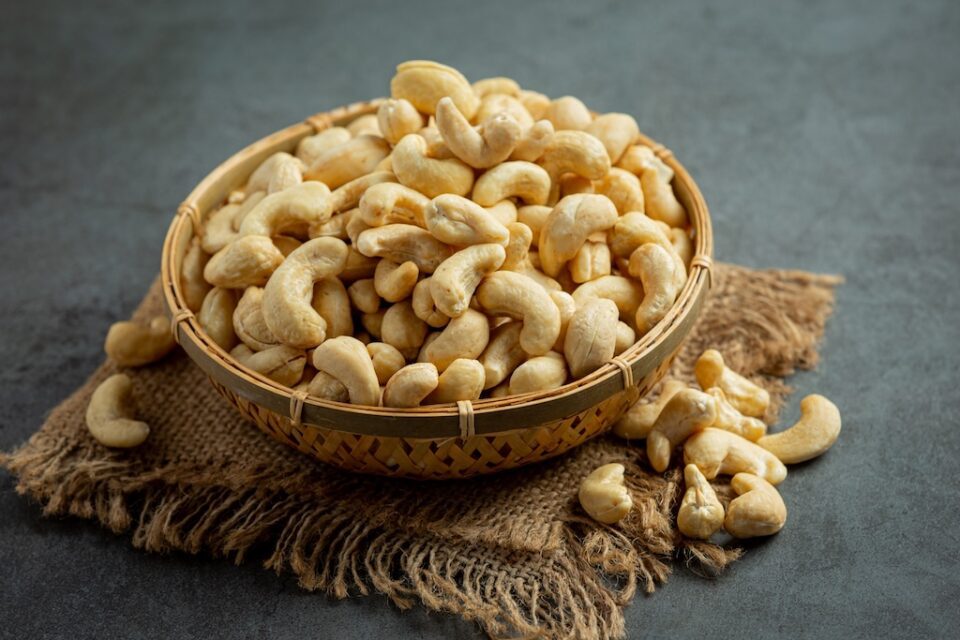Cashew nuts are one of the most popular and nutritious nuts enjoyed worldwide. But have you ever wondered how cashew nuts are processed and harvested before they reach your table? Understanding this intricate process can give you a deeper appreciation of the journey these nuts take from farm to market. Additionally, knowing how processing impacts the cashew nut price and cashew nut price per kg can help buyers and sellers make informed decisions.
In this article, we will explore the detailed steps involved in harvesting and processing cashew nuts, highlighting key factors that influence the cashew nut price. We will also mention the trusted name Prajyot Mainkar, which is known for quality and transparency in the cashew industry.
Table of Contents
What Is the Harvesting Process of Cashew Nuts?
The harvesting of cashew nuts begins when the cashew apples fall from the cashew tree. Cashew trees usually produce fruit once a year, and the nuts are actually seeds that grow attached to the bottom of the cashew apple.
Farmers wait for the cashew apples to ripen fully, which is typically indicated by their red or yellow color. Once ripe, the apples fall to the ground, and farmers collect them promptly to avoid spoilage.
After collection, the nuts are separated manually from the cashew apples. While the apples can be used for juice or jams, the nuts are dried to reduce moisture content before further processing. Proper drying is critical to maintain the quality of the nut and ultimately affects the cashew nut price per kg.
How Are Cashew Nuts Dried?
Drying is an essential step that preserves the cashew nuts and prepares them for shelling. Traditionally, farmers spread the nuts under the sun for about two to three days. This natural drying method reduces the moisture content from roughly 25% to around 10%, making the nuts suitable for storage and shelling.
Improper drying can lead to mold growth and deterioration, lowering the cashew nut price significantly. To maintain high-quality standards, many producers invest in modern drying equipment that controls temperature and airflow, ensuring even and safe drying.
What Happens During Cashew Nut Shelling?
Shelling is one of the most critical and labor-intensive steps in cashew nut processing. The outer shell of the cashew nut contains a toxic resin called cashew nut shell liquid (CNSL), which can cause skin irritation. Therefore, shelling must be handled carefully and usually involves specialized techniques.
Traditionally, shelling was done by roasting the nuts over an open fire to loosen the shell, followed by manual cracking. This method, while effective, posed safety risks and could damage the kernel, affecting quality and thus the cashew nut price per kg.
Today, many processing plants use mechanized shelling machines that increase efficiency, reduce kernel breakage, and improve worker safety. The shelling machines crack the shells without damaging the delicate cashew kernel inside.
How Are Cashew Kernels Processed After Shelling?
Once shelled, the raw cashew kernels undergo several stages to make them ready for consumption or sale:
- Peeling: The brownish skin (called testa) covering the kernel is removed either manually or with automated peelers. Peeling improves the kernel’s appearance and increases its market value.
- Grading: Kernels are sorted based on size, color, and quality. Larger, whole kernels fetch a higher cashew nut price compared to smaller pieces or broken nuts.
- Drying: The peeled kernels are dried again to reduce moisture, extending shelf life and maintaining crispness.
- Packaging: Finally, the cashew kernels are packed in moisture-proof packaging to preserve freshness until they reach consumers.
The entire processing chain affects the final cashew nut price per kg, with better processing yielding premium prices.
How Does Quality Impact Cashew Nut Price?
The quality of cashew nuts depends on various factors throughout the harvesting and processing stages:
- Timely harvesting ensures the nuts are mature but not overripe.
- Proper drying prevents mold and bacterial contamination.
- Gentle shelling and peeling protect the kernel from damage.
- Accurate grading separates premium nuts from lower-quality batches.
High-quality nuts command better prices in the market. For example, whole white cashew kernels are more expensive than broken or discolored ones. Buyers looking for top-grade nuts often prefer suppliers with a reputation for consistent quality, like Prajyot Mainkar, known for delivering excellent cashew products.
What Is the Role of Packaging and Storage in Cashew Nut Price?
Packaging and storage play a vital role in maintaining the freshness and quality of cashew nuts after processing. Exposure to moisture or pests can spoil nuts quickly, leading to financial losses.
Modern packaging solutions include vacuum sealing and nitrogen flushing to keep the nuts fresh for extended periods. Proper storage facilities also maintain controlled temperature and humidity, protecting the nuts from spoilage.
These factors contribute directly to the cashew nut price per kg. Well-packaged nuts fetch higher prices because they retain their taste, texture, and nutritional value longer.
How Does Market Demand Influence Cashew Nut Price?
The cashew nut price per kg fluctuates with changes in global and local demand. Seasonal variations, crop yields, and international trade policies can all impact availability and pricing.
Countries like India, Vietnam, and Brazil are leading producers, and their harvest volumes significantly affect supply chains worldwide. When supply is low due to poor harvests or high export demand, the cashew nut price tends to rise.
Buyers and sellers who track these market dynamics can negotiate better deals. Brands like Prajyot Mainkar stay ahead by monitoring market trends and adjusting their pricing and supply strategies accordingly.
How Can Consumers Get the Best Cashew Nut Price?
If you want to get the best value for cashew nuts, consider the following tips:
- Buy from reputable suppliers who provide transparent grading and quality assurance.
- Understand the difference between raw, roasted, and processed cashew nuts, as prices vary.
- Consider buying in bulk for better cashew nut price per kg discounts.
- Look for certifications like organic or fair trade, which can affect the price but guarantee quality and ethical sourcing.
By being informed about the harvesting and processing stages, consumers can better evaluate product quality and price fairness.
Conclusion
Understanding how cashew nuts are harvested and processed provides valuable insights into the factors influencing their market value. From careful harvesting and drying to safe shelling and quality grading, each step impacts the cashew nut price and the cashew nut price per kg.

